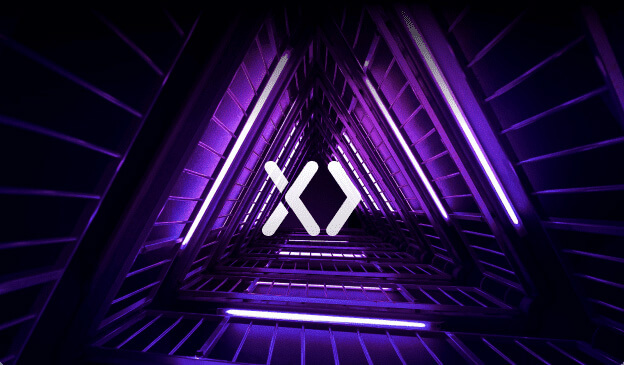.webp)

Written by:
Expresia
DXP vs CMS: What’s the difference?
Find out which platform is best for your business needs
Table of contents
- Loading...
Digital transformation was a hot topic in 2021 and moving forward into 2022, it will continue to be a major focus for businesses big and small. Navigating a digital transformation can be challenging, and downright confusing when you try to decipher between the alphabet soup of digital acronyms. No matter the size or scale of your digital update, you will need to discern which digital technologies will best serve your business needs. In this article, we will outline the differences between content management systems (CMS), web experience management (WEM) platforms and digital experience platforms (DXP), in addition, how each operates within a marketing technology stack.
.webp)
Content Management System
What is a Content Management System or CMS?
According to Gartner, a CMS is “a set of templates, procedures and standard format software that enables marketers and their proxies (e.g., webmasters) to produce and manage text, graphics, pictures, audio and video for use in Web landing pages, blogs, document repositories, campaigns or any marketing activity requiring single or multimedia content”. A CMS, short for Content Management System, is a software application that allows users to create and maintain a website without the need to learn how to code at all.
With a CMS, organizations and individuals can manage, create, and track content in a user-friendly interface. In the early days of the internet, content managers and businesses were required to be familiar with HTML, a programming language, in order to create or edit a website. Even just posting content online used to be challenging, but content management systems have greatly simplified things.
At a minimum, a CMS powers an organization’s website and applications. Content Management Systems were created to give businesses control of their content without the need to involve an IT team every time an update was required. You may construct your web pages, add information, and change design elements by logging in to your website dashboard using a robust CMS platform.
What are the benefits of using a CMS?
Let’s take a look at what a CMS can do for you on your next project and how it would impact on your team’s workflow:
- Simpler website creation for beginners: Since coding knowledge is not required, with a CMS, beginners and non-developers can easily adapt to the tools and workflows of the software. Creation is simpler and users can easily post material online, launch online businesses or create and establish a strong digital presence without the need to hire developers or have complex technical resources.
- Easy publishing and collaboration: Using a simple interface, a CMS enables anyone, regardless of their technical proficiency, to publish material and change content. Multiple users can work at the same time which allows marketers to make any content changes or updates required without having to involve their IT teams. With a CMS, all team members can even work on the same landing page; improving productivity by making it easier and more efficient day-to-day.
- Content scheduling: Align your published content on the calendar, with deadlines, special dates, or product launches. Plan whenever you want and post it later. Similarly, schedule hiding content once it becomes obsolete.
- Fits any business size: Build any kind or size of website with the correct CMS and web hosting plan. A CMS allows you to develop any site, whether it is a large company or if you're just starting up.
- Easy customization: Change the look of your website, implement your brand manual into your communications and change the style of the content you post. Plugins can be used to provide additional functionality but beware of compatibility between each and your CMS version. From minor updates to bigger ones, A CMS enables you to change sections of your website easier and faster to help. Keep your content updated and relevant.
- Easy access: Login and start to work. You can access it from any device with internet access, and control your site from anywhere.
CMS’ projections
The typical makeup of a CMS is a programming language (e.g., Java, C+, PHP or Python), a database to store content, and a user interface to create and edit that content. However, as business grows, most CMS’ are unable to grow along with the business without incurring a major expense or bespoke customizations. Often, as other forms of software are added on, incompatibility issues arise and the system becomes sluggish with too many differing moving parts.
Several trends are driving the need for a more cohesive, integrated digital framework, including consumer preference for more personalized content, an increase in e-commerce, and consumer expectations for a seamless, omnichannel digital experience.
For some organizations, a traditional CMS fits the bill, especially if handling content is only what is needed. For businesses that require data and integrations (for such things as logistics, inventories, ERP business rules and CDP), the CMS becomes part of a larger digital technology framework.
Web Experience Management (WEM)
A web experience management (WEM) platform separates content management from content delivery. Where a CMS provides the foundation to manage collections of content—workflow, reporting, organizing, and user administration tools, for example—WEM adds to that foundation by producing web-based experiences, such as publishing content to web browsers and mobile apps. It combines text and rich media (images, video and audio) to publish web pages. Like a CMS, a WEM platform maintains content within a shared repository. It also separates how a company arranges and manages content from how it publishes that content on web pages.
A WEM is a great toolbox of business procedures for building, launching and optimizing digital experiences on websites. According to Peter O’Neill for Spiceworks "in 2018, the total global annual software license, maintenance and SaaS revenues for WEM totaled over $ 5 billion, growing annually at around 16%", this is a clear reflection of the importance WEM has taken over the business market.
The increase of WEM vendors and providers could only mean the understatement of the need of customers to provide rich digital experiences with ease. This applies to developers and to the marketing growing users.
When it comes to priorities when considering a WEM option the Vendor Selection Matrix made by Peter O'Neill reveals companies look for a solution that fits customer requirements, provides local support and has a SaaS adoption. It goes beyond a suitable product. This research led to a selection of the top vendors for Web Experience Management (WEM) taking into consideration strategy and execution criteria, which include vision, innovation, differentiation, depth of solution, price vs value, among others.
Among the top WEM providers there is
- SDL: A strong solution that gives businesses the ability to manage a content-driven complex ecosystem across web, mobile, and other digital touchpoints in order to offer ongoing digital experiences.
- Amplience: Build commerce experiences powered by fast and easy content management.
- Contentful: A content management platform that allows users to integrate a set of tools and publish on several channels.
- Progress: Provider of products to create, release and oversee high-impact apps.
WEM vs Decoupled CMS vs Headless CMS Traditional WEM platforms provide both the back-end content management layer and the front-end delivery tier. Some CMS applications use a decoupled architecture, which separates content management from content delivery and presentation. With a decoupled solution, content that is managed in the CMS is pushed to the delivery tier.
With a headless CMS, there is no delivery tier. According to Wikipedia, a headless CMS is a back-end-only content management system that acts primarily as a content repository. A headless CMS makes content accessible via an API for display on any device, without a built-in front-end. So in this instance, a headless CMS stores content separately from the code used to build the presentation layer and allows one system to manage all content, no matter its destination.
So what’s the benefit of a headless CMS? In a traditional CMS, or custom-developed website that doesn't include CMS, content is as much a part of the code as is functionality. This means that if you want to change functionality on the site, you lose the content attached to it. Redesigning the website would mean having to feed content back into the new structure.
With a headless CMS, the back end (functionality) and the front end (presentation layer) are independent of one another. This allows you to manage content from a single source and serve it up to multiple channels. With a traditional CMS, you would have to duplicate the content and content management with each channel, such as an app and website. With a headless scenario, you have a single source of content that gets served to both touchpoints. And if those two touchpoints share users or inventories, data should not be duplicated across channels. In that case, you require a single management point to manage those digital assets. Typically, DXPs include a headless CMS as one of their tools.

Essentially, DXPs grew out of the limitations posed by traditional CMS in terms of creating and managing digital experiences using one control centre platform.
Digital Experience Platform (DXP)
Consumer needs have changed with the arrival of the digital age and alongside that, companies are also having to change to meet those needs and expectations from their users across all countries and industries.
Digital experience platforms (DXPs) have now entered the stage to support all kinds of enterprises and to quickly face the changes that exist now as well as new challenges that may arise in the future. As new technologies emerge and the amount of consumer needs continue to grow exponentially, businesses need to be able to adapt quickly in order to continue to address those needs.
Although a CMS may be useful in some projects as we've previously discussed in this article, there are some must-have features that companies, from start-ups to enterprises should employ if they want to keep updated in a digital transformation process.
What is a DXP?
According to Gartner, a Digital Experience Platform (DXP) is “a well-integrated and cohesive set of technologies designed to enable the composition, management, delivery and optimization of contextualized digital experiences across multiexperience customer journeys”. A digital experience platform (DXP) includes content management and WEM functions and takes these web-centric capabilities and extends them to different digital environments to create a full omnichannel digital experience.
Essentially, DXPs grew out of the limitations posed by a traditional CMS in terms of creating and managing digital experiences using one control center platform. A DXP provides a more efficient and cost-effective way to integrate multiple technologies to control multiple touchpoints.
A DXP is a robust platform of marketing tools with a CMS at its center. It provides flexible architecture that connects multiple aspects of the business in order to control every touchpoint. Possible functionalities include e-commerce, asset management, marketing automation, customer engagement (i.e., chatbots, etc.), AI and machine learning, as well as data management.
A DXP allows you to manage large-scale content and assets to deliver on all kinds of channels. A powerful DXP will make it simple for companies to set up intranets, launch eCommerce initiatives, and manage websites.
Some CMS platforms attempt to add this functionality through the use of plug-ins. This approach exposes the CMS to security vulnerabilities. Multiple plug-ins will also impede its performance. Whereas, customizing a CMS to perform these functions is cost-prohibitive.
DXP benefits
Digital experience platforms offer the technology that enables the digital transformation of organizations required to enhance customer experiences. Most enterprises need a digital experience platform, but getting one doesn't just mean reaching digital transformation. It requires a business shift in thinking and in the way things are getting done from the inside out. A DXP provides a central collaboration hub to deliver successful, meaningful digital experiences while providing the infrastructure to gather data from all channels and continue to create a digital presence. Digital transformation processes require thinking bigger and reaching the expectations and needs before they even arise. That's why a DXP alone doesn't do the work, but it takes you closer, while saving money and investing valuable time in future-proof assets.
What does DXP have that makes them a top-notch solution?
Top DXP features
- Content as the core of the digital experience: Highly personalized experiences for end users begin with valuable content as the architect of emotional networks between the brand and the customers. Creating content is as important as understanding its performance throughout multiple channels and the DXPs play the role of content managers, delivering on multiple platforms, expanding its reach, compiling insights and spreading the brand presence throughout the web.
- eCommerce capabilities: DXPs have the intelligence to acknowledge the context of the users and accordingly reply to the market's needs by accessing and exposing fundamental transactional capabilities via an API. DXPs have bolstered their eCommerce systems to expand themselves and integrate with merchandising experts in the field, implementing web 3.0 technology with ongoing information exchange between vendors and consumers.
- Low-code implementation: DXPs currently aim to approach the need for businesses to reduce the need for coding skills for managing digital assets. Innovation time is decreased and it leaves an open space for organizations to launch faster and customize their platforms with ease.
- Headless architecture: DXPs with headless architecture separate the data management from the data orchestration, which implies the update, edition and personalization of the user experience in shorter times without compromising performance. By containing the business logic in APIs, headless systems split the content layer from the functional layer.
- Data empowerment: Data provides context to the commerce and content daily executed decisions in a variety of business areas such as investment, marketing, providers, user experience, among others. In DXPs, data plays the role of being an extension between the silos of existing data and the background for target audiences, testing products and developing experiences. Data is the thing businesses aim to own due to the power of doing well-informed decisions based on facts rather than suppositions.
Some benefits of DXPs are:
- Integrated management center: DXPs make possible a smooth, frictionless customer journey. Customer data, omnichannel content management, and analytics are combined to create experiences that boost customer loyalty and deeper connections.
- Embedded Customer Data Platform (CDP): Intentional or not–from start-ups to enterprises–all companies generate an extensive data quantity, which results in difficulties when trying to extract information in a colossal landscape with multiple touchpoints that daily generate new data. With an embedded CDP you can retain information at these multiple touchpoints and compile a customer database where you can easily access insights and create an image of your final user.
- Marketing orchestration: Embedded marketing capabilities offer a comprehensive approach for businesses to launch campaigns with better quality in shorter periods of time while saving money and resources. With DXPs marketers can focus their efforts in create campaigns and strategies to connect with bigger audiences. Marketing teams synchronize around technology and offer a wider approach for daily workflows with tools such as CRM, email marketing, calendars and performance insights.
- Flexible content: Create once and deliver everywhere. Choose the channels you want your content to reach and deliver without the need to replicate it. With a headless architecture, marketing teams can now focus on creating better experiences.
- Personalization: Reach a wider view of your users and understand their digital behavior with intuitive system integration such as CRMs. Personalize the customer journey and take care of the users at every step of the process.
- Integrations with operational software: Share relevant information across all teams with ease. DXPs that sync with operational software–such as Enterprise Resource Planning (ERPs) or Windows Media Center (WMC)– create bigger meaningful connections by having one main, central system that links to all other applications that your business requires. Improve efficiency and productivity, reduce the error margin, and offer better, personalized customer service.
- Future-proof: Possibilities to adapt, implement new technologies, and communicate with audiences as digital innovation rises or as new technologies emerge are examples of future-proof assets. Be ready for the changes that the future may have and make sure you're investing your money into sustainable, scalable solutions.
Top Expresia DXP features
Expresia, an all-In-One SaaS Digital Experience Platform empowers brands to create future-proof digital assets. Marketers, developers, agencies, and content creators streamline daily workflows in one collaborative hub to deliver top-notch powerful experiences. Expresia's ultimate features are everything you need to face digital transformation in a hyper-competitive landscape.
- Analytics: It is crucial for your business to gather and understand the data that goes through your DXP and through any channel your brand has interaction with. The analytics allow you to understand your customers, and build the most realistic image possible of them. They are crucial, as they provide you with a clear perspective on business decision making processes, so you can take into consideration every factor that can transform into significant data. Expresia is built to play well with the rest of your tech and marketing stacks by providing full visibility and actionable data to empower your decisions. Imagine having total power over your own information by trying the true meaning of data governance. Expresia is the ultimate platform for companies looking to create, build and lead in a digital-first future.
- CMS: Every top-notch DXP, at its core, is built on a robust content management system (CMS) which powers the organization's website and makes the editing process of the website easier. Expresia's Content Playlists empower both developers and your non-technical contributors to efficiently create amazing results. Content Playlists allow marketers, content managers and content creators to easily customize the look and feel of content without the help of developers. It also simplifies the organization of content into straightforward and manageable groups.
- Native eCommerce: In order for an e-commerce engine to manage the whole shopping process, including inventory, orders, pricing and promotions, it must be content-integrated. Built primarily for flexibility and efficiency, our extensible API-driven digital e-commerce framework allows full control of products and their variants, promotions, inventory, and logistics integrations. It was designed to level up the digital needs your business could have.
- Flexibility: A Company's digital assets frequently need the organization to handle day-to-day problems and that's why flexibility is such a big deal. In the past, websites primarily served as online brochures when most businesses used web and digital experiences to display a product. The requirements and duties of today are much more complex. Currently, businesses utilize their DXPs for things like trademark protection, self-service, marketing, and client retention. You often require a variety of component types to deliver these functionalities. When choosing a DXP, it is crucial for you to make sure that the one you choose has the features your business requires to continue growing or that it can easily be linked with services that offer them. Expresia’s extensive and elegant RESTful APIs are the core of the platform’s architecture and one of its most powerful features. Save time and embrace an efficient workflow that allows for easy integration with other third-party APIs.
- Agility: Being able to move and pivot smoothly while adjusting to changing situations is a crucial component of agility. This translates into the digital world's need to take products out to the market in the short term with complex solutions, which require robust technology. With Expresia you can build robust API-first products fast with immediate “time to first value.”
How to choose the right DXP
Your agenda shouldn't be dictated by technology, in fact, digital experience technology should support your company's strategy and help you to achieve your greater goals. Although technology by itself cannot address strategy problems, the ideal toolbox may assist businesses in reaching their full potential and preparing for a digital-first future. Begin by asking yourself a few questions and identifying some key objectives for your business.
Why would you need a DXP?
Start by identifying your stakeholders, and the audiences your business is talking to. Who comes to mind as the people you want to interact with? Then, having the stakeholders on your mind, ask yourself the goals you aim to achieve. Set your objectives and from there start drawing a guide of the capabilities your business owns and the ones you'll need to look for.
Once you've defined the objectives you want to achieve and the people you are trying to reach, think about your existing workflows and how technology can help you improve these. Do not run and try to get it all at once. When you're on the path of considering improving your digital assets, make sure the systems you get do not overlap with each other and have the ability to expand as your business does. Digital experience platforms may be your best ally, but make sure they can integrate with other features with the flexibility you may need. DXPs should be your greatest investment. You don't want to end up in a situation where you've decided on a platform and then two months later, it no longer fits your needs.
How does a DXP improve customer experience?
Who will use it, and how will it help them achieve new goals or increase productivity? How would it enhance the customers' journey? How simple or challenging will it be for this technology to connect with third parties? Investigate before deciding on a platform. Ask for a demo or go through success stories so you can see firsthand how an individual DXP has helped other companies to accomplish their goals. This way you'll get a better understanding of what they will be able to do for you.
Analyze product integrity
It’s not about a checklist for you to mark with all the features a DXP has. Ask yourself the right questions, so you can make sure the DXP of your choice actually fits your needs. You can start by asking yourself these questions
- Will this help empower your team to fulfill the challenging digital requirements?
- Is it logically integrated?
- Do any features overlap with a different product or perhaps is there already something similar on the market?
- Can you create and update your content once for all digital channels supported by the DXP?
- Is data being captured? Is the data collected what you are looking for? Will you be the owner of your data?
- When a DXP claims to have analytics and online content management, is it actually integrated?
- Can development be high-efficient and shorten the go-to-market times?
- Are content and commerce decoupled from the experience layer?
- Does it offer infrastructure services that streamline my IT department's operations?
- How secure is the system?
Answering these questions will provide you with a clearer picture of what DXP will best suit your business.
Expresia uses AWS infrastructure, one of the most secure and reliable Cloud options. This infrastructure takes care of the architecture for you, ensuring you stay secure, updated and consistent without having to design and maintain your own system. Our DXP avoids the risks associated with plug-ins by using an impressive API with more than 180 objects and a consistent syntax to manipulate them. This results in a simpler, more effective way to connect to third parties.
Contact us to learn more about our Expresia and we can help you determine which digital solution is right for you based on the unique needs of your organization.
Featured news
Grow your business today

Book a demo
In as little as 30 minutes, discover how to future-proof your business.
.jpg)






